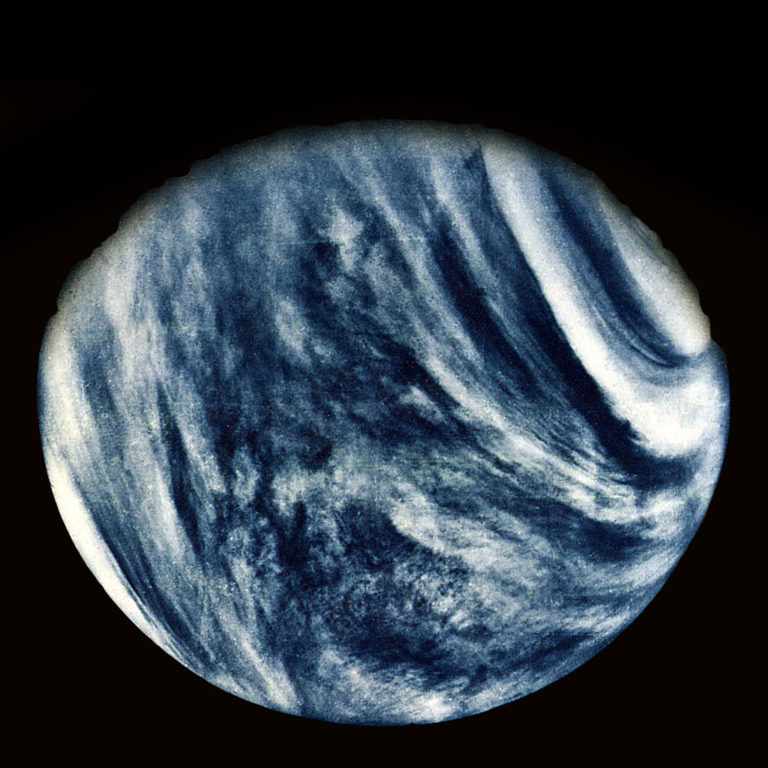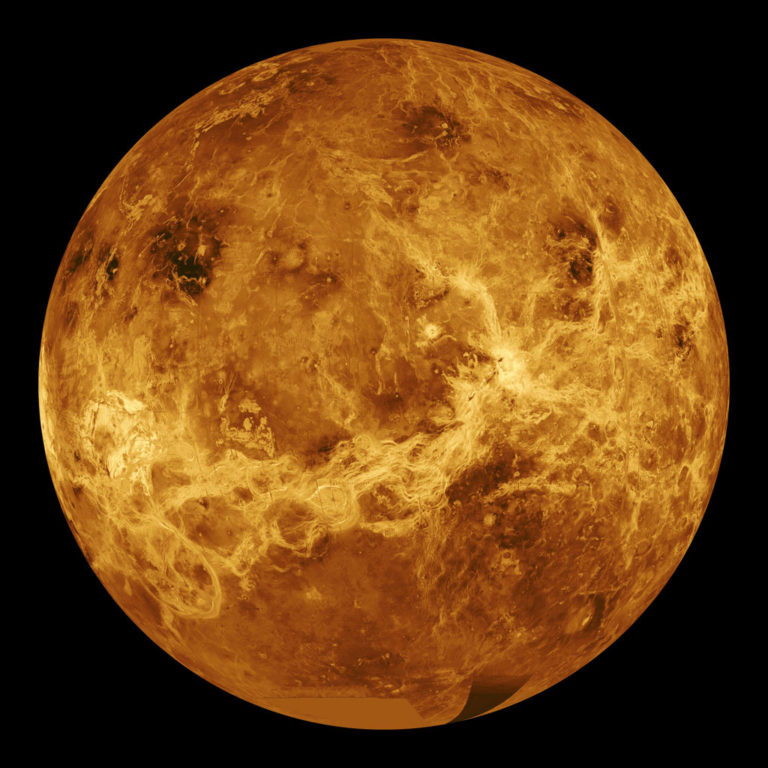Then & Now: Venus
Left image
On Feb. 5, 1974, NASA's Mariner 10 spacecraft took the first-ever close-up photo of Venus during its mission to study the atmospheric, surface, and physical characteristics of Venus and Mercury. This image was taken using an ultraviolet filter, then color-enhanced to display Venus’ cloudy atmosphere as the human eye would see it. It was the first spacecraft to visit two planets and the first to use gravity assist to boost its speed. In fact, it snapped this photo as it flew by Venus during a gravity assist that changed its speed and trajectory, shooting it toward our innermost planet, Mercury.
Right Image:
The Magellan spacecraft launched on May 4, 1989, entering orbit around Venus on August 10, 1990. During its orbit around Venus, it made quality radar maps of 98 percent of Venus’ surface. Using radar technology, it was able to peer through Venus’ thick clouds to the topography below, revealing a geologically active and tantalizing world. The radar mosaics were then mapped onto a computer-simulated globe. The remaining gaps were filled in with data from several other missions (the Soviet Venera 15 and 16 radar and Pioneer Venus Orbiter altimetry) as well as data from the Earth-based Arecibo radio telescope. It was produced by the Solar System Visualization Project and the Magellan Science team at the Jet Propulsion Laboratory Multimission Image Processing Laboratory.


 Explore Worlds
Explore Worlds Find Life
Find Life Defend Earth
Defend Earth



